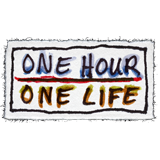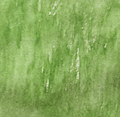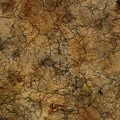@DeletedUser41376418 (talk | contribs) (update as of v239) |
(→Lives: changed to version 244) Tag: Visual edit |
||
| Line 84: | Line 84: | ||
===Lives=== |
===Lives=== |
||
| − | As of [[Version |
+ | As of [[Version 244]], the number of lives a player gets per day is limited. A new player starts with 12 lives, then earns one new life every 20 minutes if they are not already at 12 lives. These regenerate whether you are playing or not. So most players can just fully regenerate their 12-life buffer overnight whilst they are sleeping. However, this means that "choosing" the life you want to live incurs a cost, and must be carefully considered. |
=== Eve === |
=== Eve === |
||
Revision as of 20:29, 10 August 2019
| This article includes terminology or recommendations that are popular in the meta game, and is subject to change. |
| This article may need cleanup to meet quality standards.
Please help improve this if you can. The Discussion page may contain suggestions. |
Please help improve this if you can. The Discussion page may contain suggestions.
Reason: "Information on Temperature out of date (Feb 2019)"
This is a community-written Starting Guide for One Hour One Life.
More detailed step-by-step tutorials are available on the Town Guide and Eve Guide pages.
Introduction
One Hour One Life (OHOL) is a collaborative survival game where players have 60 minutes to live an entire life from birth to old age. Players are continually spawned as the children of other players, and the overall objective is to help one's family lineage last as many generations as possible.
A lineage begins when an original Eve establishes a primitive village. As multiple generations pass, players develop more advanced technology and deplete the natural resources around a settlement. Villages are constantly threatened by starvation, wild animals, infertility, and even crime. One question is always at stake: can one tiny village defeat the odds and grow into a flourishing city? Or will everything collapse and crumble to chaos?
To address these challenges, the player community has evolved unofficial guidelines, conventions, and meta strategies to increase the chances that a settlement survives. Several components to the meta game are universally accepted and considered common knowledge by the existing player base. This guide explains meta terminology and essential concepts that players are likely to encounter while playing the game.
OHOL is a game with a steep learning curve, so it is absolutely normal for beginners to feel overwhelmed. Over 2000 craftable objects exist in the game, and few players learn everything. Instead, OHOL is a game about active learning, experimenting, and teaching. As a result, don't be shy about asking your in-game "mom" for help, and remember to teach the next generation everything you know!
Controls
Movement and Actions
One Hour One Life primarily uses the mouse buttons to control the player character. Most actions are performed using a <left-click>, such as moving the character. <Left-click> is also used for interacting with objects, picking up items, crafting, and eating. <Right-click> is used to drop items, switch items, remove items from containers, and to use weapons.
The <space-bar> can be held down to prevent the camera from moving.
Speech
The <enter> key is used to open a speech box into which messages can be typed.
The maximum length of a message that can be typed depends on the player character's age. A baby can only type 1 symbol, and a 60-year-old elder can type 60 symbols. The maximum message length increases by one symbol every minute. Speech from players outside of the family lineage is automatically scrambled into a garbled foreign language.
Certain special phrases have unique game behavior. There are phrases for naming oneself or children, granting property rights, and cursing disruptive troll players who abuse the game. For example:
- "MY NAME IS DOE" - Sets the player's family name to "DOE", if the player does not already have a family name.
- "YOUR NAME IS TOM" - Sets an unnamed baby's name to "TOM".
- "CURSE MARY SUE" - Curses the player named "MARY SUE".
Console Commands
See main article: Console Commands
The speech box can also be used to type various console commands by starting with a <forward-slash> ("/").
Console commands can be used for making emotes, searching for crafting recipes, and performing suicide as a baby.
User Interface

Age and Time
See main article: Life Stages
Players age one year for each minute that passes in the game. If a player survives until age 60, they die of old age.
Age impacts the length of messages a player can write, the size of the Food Meter, and limits the types of activities a player can perform as a child.
Food Meter
See main article: Food Meter
The bottom left of the screen is occupied by the Food Meter. Each box on the Food Meter is called a "pip." If the Food Meter is depleted, the player character will starve. Eating food restores the Food Meter.
The size of the Food Meter changes according to age. At birth, the Food Meter contains four pips and increases by one pip per minute until it reaches a maximum of 20 pips during adulthood (age 25-39). During old age, the Food Meter begins to shrink again. At three pips, the player character will die of old age.
The rate that the Food Meter drains ranges from 2 to 22 seconds per pip, depending on the temperature. At temperature extremes, players consume food 11 times faster than being at the optimal temperature. As a result, it is recommended for players to obtain or craft clothes as soon as possible to reduce overall food consumption.
Yum Bonus
See main article: Yum Bonus
Eating a "chain" of new ("yum") foods builds the Yum Multiplier. Each time a new food is eaten, the Yum Multiplier is added to the Yum Bonus. The Yum Bonus is a slowly decaying hidden Food Meter that stores extra free food value. The regular Food Meter will not decline as long as a Yum Bonus is active. Eating an old ("meh") food breaks and resets the Yum Bonus.
Experienced players are able to "chain" the Yum Multiplier to high values, maintain a positive Yum Bonus, and thus reduce the amount of food they need to eat by drastic amounts. It is highly recommended that players eat a large variety of foods as much as possible, since eating new foods gives extra caloric value. Starvation is the most common cause of death in One Hour One Life, so repetitively eating the same food is often inefficient and wasteful.
The Food Guide provides an overview on how to identify and eat the most efficient foods.
Temperature Meter
See main article: Temperature
The bottom right of the screen is occupied by the Temperature Meter. An arrow at the midpoint represents an optimal temperature.
Temperature affects the rate that food is drained from the Food Meter. Extreme temperatures drain food up to 11 times faster than being at an optimal temperature. Consequently, players are highly recommended to obtain and wear clothes as quickly as possible.
Many factors contribute to temperature: biome, fire, clothing, floors, buildings, and disease.
Clothing insulates against temperature extremes by slowing the rate that the temperature meter changes. Crossing directly from a cold biome to a hot biome can cause the temperature meter to spike to an extreme.
Game Mechanics
Tutorial
See also: Tutorial Guide
The first time the game is played, the player will be spawned in the tutorial.
The tutorial covers the game controls, food, temperature, clothes, yum bonus, crafting, names, and curses. The player must start a fire and light a torch in order to complete the tutorial. An optional section at the end of the tutorial allows for the player to experiment with crafting and smithing with a limited set of materials.
Spawning
In the main game, players will spawn as the child of another player, or rarely, as an "Eve".
The spawning algorithm is random, with certain factors influencing the fertility of mothers. In most circumstances, a player will spawn in an established settlement typically classified by its technology level (e.g. village, town, city).
During infancy, players are helpless and must depend on their mother for breast milk. It is common practice for babies to say F when they need food (typically around 1-2 pips on the food meter).
If a baby does not wish to play, they can type the console command: /die to suicide with sudden infant death. It is poor etiquette for babies to suicide by running away from their mothers, as this prevents the mother from giving birth to another child for a period of time. This is troublesome in small villages or declining towns, because the lack of female babies can cause a family to go extinct. The /die command is preferred because it resets the birth cooldown timer for the mother.
Lives
As of Version 244, the number of lives a player gets per day is limited. A new player starts with 12 lives, then earns one new life every 20 minutes if they are not already at 12 lives. These regenerate whether you are playing or not. So most players can just fully regenerate their 12-life buffer overnight whilst they are sleeping. However, this means that "choosing" the life you want to live incurs a cost, and must be carefully considered.
Eve
Naming
It is possible, and recommended, to choose a family name as an Eve. This can be accomplished by using one of a variety of phrases, such as "I am X", where X is the desired family name. You will then be styled as "Eve X". In addition, it is possible to give first names to your children by using phrases such as "You are NAME" while holding them. Your children will then be styled as "NAME X". You can name children and adults as well if they do not have a name. Just stand near them and say "You are NAME" but they will not receive your family name, only a first name. Should you have a daughter but fail to name her she will no longer be able to pass your family name onto her own children (though she will still be considered to be related to you along with her children, if any). Names are selected according to external lists (first and last) and should you select a name that is not on the list the game will automatically select a similar one.
A link to view Family Trees can be accessed on the game's main menu and at the top of the official OHOL website.
See also: Names • Lineage Ban
Crafting
Child-bearing
Parenting
Property
Curses
Death
The World
The Server
Biomes
Biomes are zones where only certain resources spawn. A basic understanding is useful in locating early-game food and materials to craft tools, as well to avoid dangerous animals. Note that this list is incomplete, focusing only on the resources you will be using early on, and that some of these items may be found in more than one biome. For more complete list, see the Biomes page.
- Grasslands have berries, milkweed, the early trees you'll need, and soil.
- Yellow prairies have rabbits, wheat, and wild carrots.
- Swamps have tule reeds, goose ponds, and clay.
- Badlands have rocks and flint.
- Tundra biomes have seals and rocks. These areas are cold and will lower a player's temperature. It may be better to avoid tundra in early game if you can.
- Deserts have cacti, flint and rocks. These areas are hot and will raise a player's temperature.
- Jungles have bananas but also mosquitos. These areas are warm and will raise a player's temperature.
Non-renewable Resources
Renewable Resources
Natural Spring
Stacking a total of ten Stone on a Natural Spring will create a Well Site. Using a shovel on it at that point will create a Shallow Well.
Wild Animals
More often than not, you will die of starvation, however there are other ways to die in OHOL. Certain animals, including some domesticated animals, are dangerous. Encountering a hostile animal (by occupying the same space as a resting hostile animal, or while running), will result in the player being wounded, and eventual death if not treated.
Wolves, snakes, and boars move erratically, usually away from the player, and are confined to their biome, but still present a danger (especially when hidden in thick forests). Unlike other wildlife, Bears actively pursue players in their vicinity, and will follow a player across biomes, presenting a risk to an entire village. Mosquitos will not immediately kill a player (unless bit several times), but the Yellow Fever they give will affect your temperature and food gauge, making it more likely that you will die of starvation.
Other players, too, can be dangerous when they are armed (sometimes entirely by accident).
Foreigners
Tutorial and Recipes
The tutorial is a basic introduction to the game, accessed on the login screen of the game. It will instruct you on the basic mechanics of the game, and give you time to experiment in a closed environment. In order to finish the tutorial, you must light the "tutorial torch" near the end of the passageway. This requires knowledge of fire.
Much vital information is omitted from the tutorial, some of which can be accessed by using the inbuilt recipe index. Holding an item in game, will make a set of related recipes appear in the bottom right corner of the game interface. These can be scrolled through using tab, and z+tab to go back. Ctrl+tab makes bigger page jumps. Furthermore, if you type "/" into the speech box, followed by an item name, e.g. "/Rope", it will only show recipes used to craft that item. Entering "/" will clear the search function again. The search function is limited, and can be difficult to use when lots is happening on screen, but can still come in handy.
The information that cannot be gleaned from the tutorial or the recipe index can be discovered through gameplay, observing or asking other players, or (as a last resort) can be found in this wiki and at Onetech. Additionally, you can try asking for help on the forums. The wiki, tech-tree and forums can all be accessed via links at the top of the game's official website
Life as a Baby
Most of the time, you will spawn as a baby. You have few hunger pips and are completely helpless, totally reliant on your mother or other adult women. You should expect to die frequently, and be abandoned or otherwise neglected fairly often. This is normal and should not be taken personally. Settlements must carefully manage their populations or risk starvation and, in the case of Eve mothers, the burden of caring for babies is great.
To raise your chances of survival, stay close to your mother (unless she instructs otherwise), stay a balanced temperature if you can, and tell her when you reach approximately 2 hunger pips (Most commonly communicated by typing 'F' for 'food'). Follow her, or remain still when appropriate so she can easily pick up you when required. Picking you up requires the mother to sacrifice 1 pip of her hunger bar, so avoid jumping out of her arms (by clicking or trying to move) while she carries you. In the first minute of life, you will be unable to jump from your mother's arms.
If your mother neglects you, you might be lucky enough to have an older sibling or another family member who is willing to feed you. Show your appreciation by following their directions. Note that only young women can breastfeed you. Old women or males cannot breastfeed. However, any player who can pick up objects can feed babies by clicking on them while holding a piece of food.
Above all, do not get discouraged by death -- just keep respawning until you are born to a mother who can care for you. Or spawn as an Eve.
Life as an Eve
Sometimes you will spawn as a 14-year-old woman, known as an Eve. You will be naked, most-likely in the middle of no-where, and soon other players will begin spawning as your babies (assuming you are not playing entirely by yourself). To feed your baby you must pick it up at a cost to your own hunger gauge. Holding a baby will keep its hunger gauge maxed out at no additional penalty to yourself, but you are unable to pick up or interact with anything else. There is an internal cooldown that attempts to space out births, but, since it is semi-random, you may have many children in quick succession or no children for minutes at a time.
Your goal is to find a food source before you starve, then ultimately to find a good base location to build a future for yourself and any children you have. Most early-game food sources can be found in the grasslands. Your best bet is to search for berry bushes. These can be supplemented with various other non-renewable wild food until you get a farm going. Beware, food doesn't last forever!
A good base location tends to be at the intersection between multiple different biomes, with plenty of resources. Your temperature and Yum Bonus will influence the rate at which you give birth. If you are at an ideal temperature and have a high yum chain, you are more likely to have a baby. Choosing a good location will also make your babies more likely to stay, and will improve the overall likelihood that your bloodline will survive many generations. Naming yourself is another step you can take to increase your chances. Don't take it personally if your babies run away or die in your arms (often they may just be trying to return to a past life). Focus on learning and practicing what you can in each life. If you mess up, you can always start afresh in the next life.
For more detailed information on 'Eve-ing' see the Eve page.
General rules for beginners
1. Clutter is death.
Although you will need to stockpile various resources throughout your play, be mindful of clutter, especially around Gooseberry farms and Smithing areas. If there are no empty tiles, you will either be unable to drop whatever you are holding, or you will just switch items with the one on the ground. Many a character has starved because they could not free their hands to pick a berry. In addition, you will soon learn that you cannot click on items behind other characters. With this in mind, avoid standing in front of items that another player is working on, such as the forge.
2. Aim for balanced temperature - Wastes less food.
The rate at which you starve is influenced by your character's temperature. If your meter is in the center, you will waste less food than if it is at extreme heat or extreme cold. When you are a baby, you can improve your chances by finding an optimal temperature tile. And if you contract Yellow Fever (which dangerously raises your temperature), you should avoid warm tiles and ideally find a snow biome tile to counteract the effects.
3. Eat small foods when young.
There are various food items in OHOL, each of which replenish different amounts. When you are young, and have only a few food bars, you should only eat foods with small values, such as Popcorn (3 bars) and Gooseberries (5 bars). This ensures that you do not waste food by overeating. Later, when you have more bars, you can move on to bigger foods such as Pies (7 - 20 bars per bite depending on the variety). Eating a variety of foods as an adult will also increase your Yum Bonus.
4. Soil and water on languishing berry bushes.
One of the first things you will learn is farming gooseberries, which is vital to the survival of a town. This task is usually assigned to children so that they can work while staying close to food. Here's the basics: Bushes that need attention will be a brown colour. Mouse-over a bush to read its state. Languishing bushes need a bowl of soil, and dry bushes need a bowl of water. Bigger clumps of dirt can be picked up with a basket, and you may need to get water out of a Deep Well or Cistern with a bucket. If you are having trouble, watch or ask other players.
Tip: A common mistake new players make is planting too many bushes. Tending gooseberries is very resource intensive, and relying too heavily on berry bushes will cause the town to collapse. Once a town has 40-60 bushes, it is unnecessary, and even detrimental, to plant more. Also, be sure to leave paths down the middle of your berry patch to allow a place to put down bowls etc.
5. Tools break - Don't overuse them. Till piles of two soil to save iron.
Certain tools have a limited number of uses until they break. Using steel tools efficiently is especially important since the iron nerf. Shovels are vital for the Compost cycle and generally should not be wasted on digging graves (see Bones page for full explanation). A Hoe can be used more efficiently by only tilling piles of two dirt (see Hoe page for full explanation).
6. Name your babies, and don't overfeed them
Remember to name your babies; It is important to be able to identify other characters, to keep track of griefers and to curse them (See the Names page for a full explanation). If you set up your named baby at an ideal temperature, you won't have to feed them as often. Picking up a baby costs you one food bar, so if you pick them up too often, you will waste food. To avoid this, get the baby to say "F" when they are at two bars, and wait until then to pick them up. Alternatively, you can just keep holding the baby at no extra cost to yourself.
7. Hunt and snare animals only when they are in families

Rabbit holes snared without babies will take an hour longer to regenerate. Additionally, killing Mouflon, Boars and Bison in their family form will allow domestication of the baby. In general therefore, it is better to kill wild animals in their family form.
8. Harvest milkweed when fruiting for seeds

Milkweed stages
Harvest milkweed when it is fruiting (fruiting milkweed will have yellow pods, not purple flowers) in order to collect seeds from the debris. Fruiting debris lasts for 10 minutes while young and flowering debris only last for 1 minute but give no seeds. (Note: Milkweed no longer regenerate from fruiting debris).
Most seeds now decay if not stored in a Clay Bowl. Make sure to save seeds for the next batch.
9. Use clay wisely
Unlike most resources, clay is non-renewable. You can only collect them from clay pits and one extra by digging up a clay pit with a shovel. Once you have used up all the clay in the area, you will need to travel further and further in order to collect more.
10. Straight Branches
Straight branches are vital for a town's survival, especially in the beginning of a family in Eve camps. You must try to preserve the straight branches and not use them in cases where there are other alternatives, such as for kindling. Even if you walk past a straight branch on a tree, it is always a good thing to pick it and set it down, resetting the respawn timer and hopefully leaving the next person who discovers that tree with an extra straight branch. Avoid cutting down useful trees if you can avoid it.
11. Canada Goose Pond
Geese lay eggs, give feathers for arrows, and can be killed for meat when present at the pond. But geese will permanently be removed from ponds if the goose is shot, or the pond is completely emptied or overfilled. It shouldn't discourage you from emptying ponds for wells but it is always a good strategy to keep at least one goose pond intact.
12. Gooseberries
It is a common myth that the last berry should be left on a domestic bush. Unlike wild bushes, the berries do not regenerate one-by-one every 10 minutes, but take 8 minutes to respawn all at once- and only after adding soil and water to an empty bush, in which case it is better to take the last berry in order to replace the berries sooner.
13. Pay attention to carrot crops
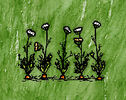
Seeding carrots
After you water carrots, it will take 4 minutes to become mature carrots. But if you do not pick them, after 5 minutes the carrots that remain in the soil plot will go to seed and when harvested will give you more carrot seeds instead of carrots. After a further 10 minutes, the seeding carrots will disappear. If you need carrots, then make sure to watch them and pick them before they turn.
Keep in mind rule number one; if you have several carrot seeds already, picking five seeding rows will just result in more clutter. Use your discretion.
14. Leave one woolly sheep
When tending your sheep pen, DO NOT kill the last sheep. Additionally, it is standard to keep at least one sheep, or Domestic Mouflon, or fed lamb, in order to produce lambs. Shorn sheep will not produce lambs and must be fed to re-grow their wool. So it is more cost-effective to designate shorn sheep to be killed for mutton, and produce more wool and dung by feeding lambs instead.
15. Shave sheep before skinning
When you kill a woolly sheep, it will keep its wool. You can still shave the dead sheep with shears to get fleece that can be used to make thread. Skinning it with a knife will give you a sheep skin which has comparatively limited uses.
Resource Respawns
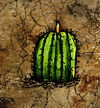
Fruiting Barrel Cactus
- Water, wildlife, the harvesting of wild berry bushes, cactus fruits, and tree branches does not require the same special consideration, as these resources will always eventually respawn, although may be finite in the short-term (objects can take between 15 to 60 minutes, to regenerate).
- As of update 207, Carrot Seed Heads will decay after 5 minutes, so use your discretion when eating wild carrots. Burdock and wild onions are early food sources that cannot be cultivated, provide no seeds, and do not respawn.
- Fertile Soil Pits are also finite. However, it is possible to craft soil via compost later in the game.
Next stage
Now that you've mastered the basics, here are some topics to consider pursuing:
- Fire • Farming • Animals • Compost • Cooking • Baking • Clothes • Smithing • Tools • Medical Treatment • Building
For a more detailed guide on how to survive and thrive in early settlements, see the Eve page.
